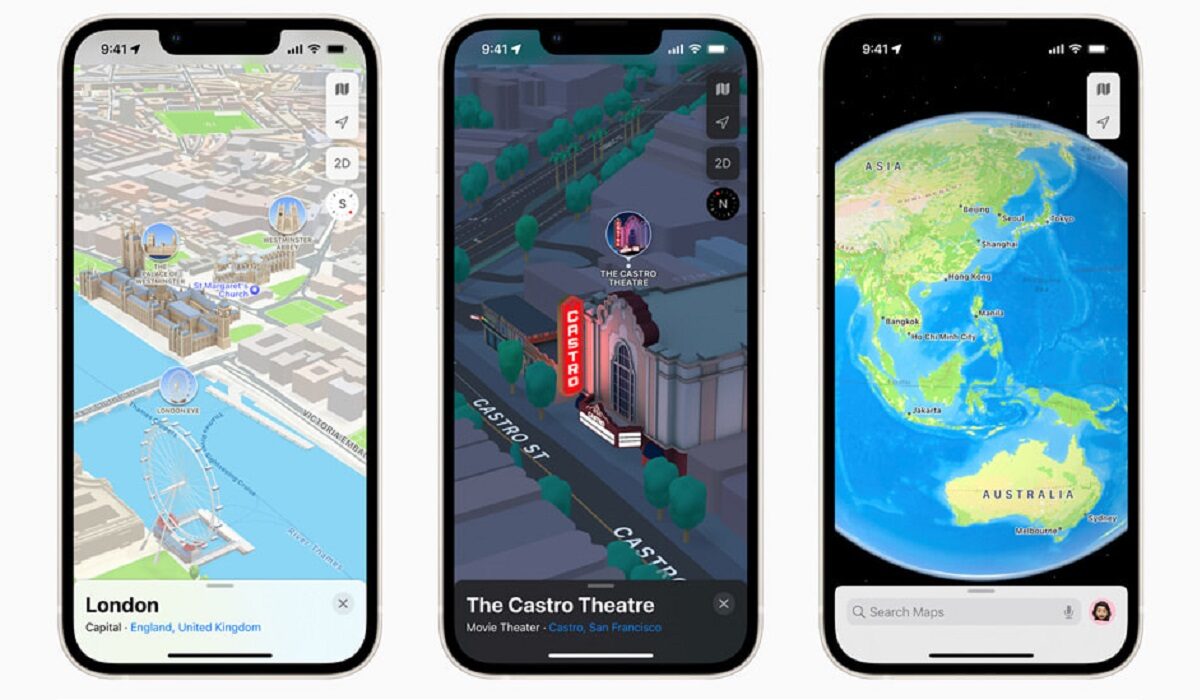Apple Maps is a web mapping service and navigational tool developed by Apple Inc. It is available as an app on devices running iOS, iPadOS, macOS, and watchOS. It is also available for use on the Web with your browser.
Apple Maps was first launched in 2012 with iOS 6, as an alternative to Google Maps. But that initial product was a disaster and pretty much useless to anyone. In September 2018, a new, revamped version was later launched to make it a more useful tool. Since then, the product has continued to make progress.

Apple Maps vs Google Maps
As Google Maps is the default navigation tool for hundreds of millions of mobile phone users around the world, it is natural for people to compare the two services. Both have key features that users have come to expect from a map tool – transit directions, real-time navigation, traffic, location sharing, ability to save locations, street view, satellite view, incident reporting, voice assistant support, etc.
Apple Maps is far behind Google Maps in terms of features and coverage. For example, while Google Maps is usable almost everywhere in the world, Apple Maps coverage as at April 2022 covers a mere 8.5% of the world’s population. Also, Google Maps’ provides more accurate and detailed info about the impact of traffic on your movement.
Google Maps allows users to download maps to their devices upfront, so they can continue to navigate even when outside of network coverage area. This is another distinct edge that it has over Apple Maps. Google Maps also supports various modes of transportation – including car, public bus, cycling, and walking. Apple Maps does not provide this.
Lastly, in terms of availability on multiple platforms, Google Maps wins hands down, as you can use it on any kind of terminal, including Android phones and tablets, iPhones, iPads, Windows PC, and Mac. Apple Maps, on the other hand, is available only inside of Apple’s ecosystem, on devices like iPhones, iPads, and Mac. It is not available on Android and Windows platforms, though you can access it via a Web browser.
If you are locked into Apple’s ecosystem, though, and Apple Maps covers your location, it has a better integration, and you should consider using it. Speaking of locations and coverage areas, as at April 2022, Apple Maps is available in only eleven countries and territories. Outside those locations, it is useless. Have a look at the list of locations below.
Apple Maps Coverage Areas and Locations
Do you want to know what locations Apple Maps has covered? Have a look at the list below.
- Initial Coverage Location: Northern California (from September 2018)
- Expansion #1: Hawaii (from November 2018)
- Expansion #2: Southern California (from January 2019)
- Expansion #3: Southwest U.S. (from March 2019)
- Expansion #4: Texas & the Gulf Coast (from August 2019)
- Expansion #5: Northeast U.S. (from September 2019)
- Expansion #6: Midwest + Western U.S. (from November 2019)
- Expansion #7: Final Parts of the Continental U.S. (from January 2020)
- Expansion #8: Puerto Rico, Guam, the U.S. Virgin Islands (from April 2020)
- Expansion #9: Ireland, United Kingdom (from October 2020)
- Expansion #10: Canada (from December 2020)
- Expansion #11: Spain & Portugal (from June 2021)
- Expansion #12: Italy, San Marino, Vatican City, Andorra (from September 2021)
- Expansion #13: Australia (from December 2021)
- Expansion #14: Germany, Singapore (from April 2022)
- Don’t miss our reviews.
- Join our WhatsApp Group, to be notified of the most important articles and deals,
- Follow us on Instagram, Facebook, Twitter, and YouTube.

